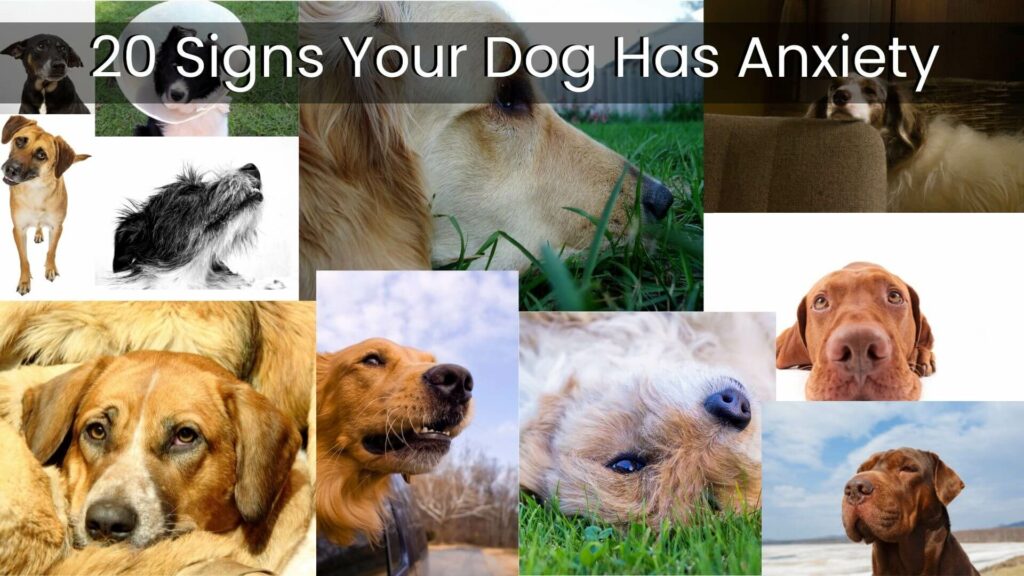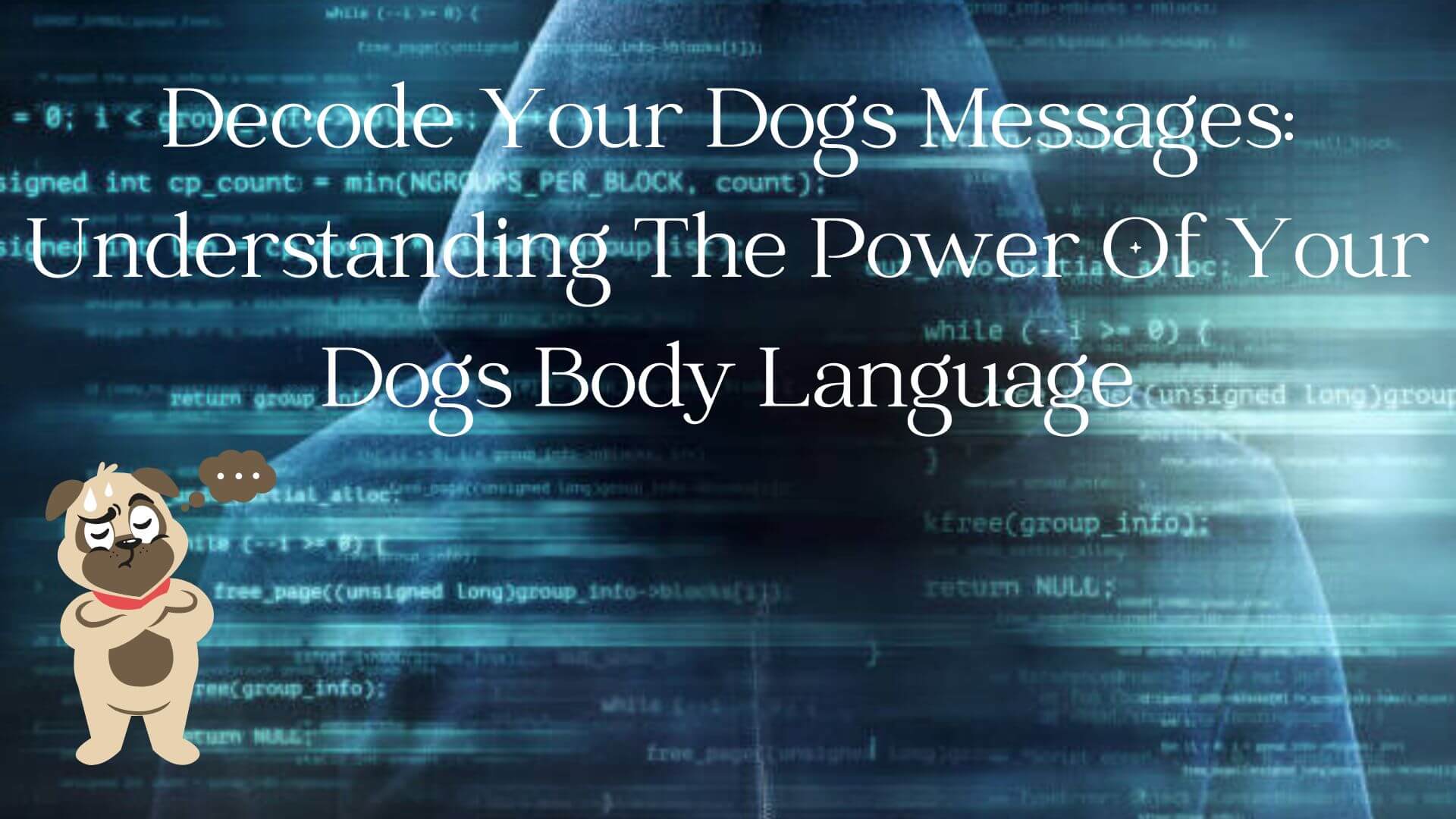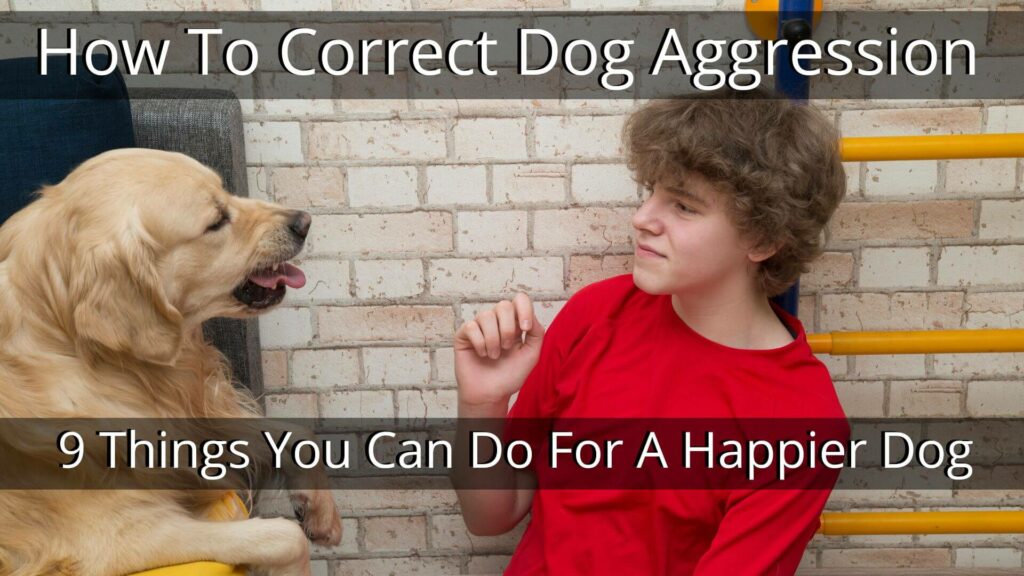Understanding your dogs body language doesn’t have to be rocket science. Dogs are amazing creatures, but their communication can sometimes seem like a mystery to humans.
Picture this: you’re sitting on the couch, enjoying a peaceful moment with your furry friend. Suddenly, your dog starts doing the infamous “butt sniff,” and you’re left wondering, “What on earth are they trying to tell me?”
In this post, we’ll be decoding the messages your dog’s body language sends you. And don’t worry; there won’t be any complicated diagrams or scientific formulas involved—just some good old-fashioned observation and interpretation. So, get ready to have fun and learn something about your furry best friend’s body language!
Let’s face it; our dogs can’t talk to us like we talk to each other. They can’t say, “Hey, human, I’m feeling sad today,” or “I’m really excited to go on a walk.” Instead, they use their body language to communicate their feelings and intentions.
This is why understanding your dog’s body language is crucial for building a strong and healthy relationship with your furry companion. You don’t want to accidentally upset your dog by doing something that they interpret as threatening or aggressive. Plus, if you can accurately read your dog’s body language, you’ll be able to recognize when they are feeling stressed, anxious, or unwell and be able to help them before things escalate.
So, let’s get to it! It’s time to decode those messages our furry friends send us through their tails, ears, eyes, and everything in between. And who knows, maybe you’ll even be able to teach your dog some new tricks once you understand their body language a bit better!
This post will cover everything you need to know to become a pro at reading your dog’s body language. We’ll start with the basics – the different parts of a dog’s body that communicate their emotions. We’ll show you how to read the signs so you can tell if your pup is happy, sad, nervous, or excited.
Then we’ll dive into the different types of body language that dogs use to communicate their emotions, from aggressive to submissive and everything in between. You’ll learn how to recognize these different types of body language and what they mean.
But that’s not all! We’ll also teach you how to use your own body language to communicate with your dog. You’ll discover how to show your pup that you’re in charge, relaxed, or happy through how you carry yourself.
And to ensure you don’t fall for any common misunderstandings or myths about dog body language, we’ll debunk a few along the way.
So, get ready to become a body language pro and strengthen the bond between you and your furry friend. Let’s get started!
The Basics Of A Dogs Body Language
Ah, the wonders of a Dogs Body language! Dogs use their entire body to communicate their emotions, from their wagging tails to their perky ears and beyond.
Let’s start with the tail. A wagging tail doesn’t always mean a happy dog. A loose, relaxed wag can indicate excitement or happiness, while a stiff wag may indicate aggression or discomfort. A tucked tail, on the other hand, signals fear or submission.
Moving on to the ears – perky, upright ears often indicate alertness or curiosity, while flat ears can signal fear, anxiety, or aggression.
Now, let’s talk about the eyes. Like humans, a dog’s eyes can tell us a lot about its emotions. Dilated pupils may indicate excitement or fear, while narrow pupils could indicate aggression. A relaxed, “soft” gaze usually means your pup feels calm and happy.
And let’s not forget about the mouth – a relaxed, open mouth usually means a happy, content dog, while a closed mouth with tense lips could indicate discomfort or anxiety.
All of these different parts of your dog’s body work together to give you clues about what they’re feeling. By paying attention to their body language, you’ll be able to understand your dog on a whole new level. So, next time you hang out with your furry friend, look closely at their body language and see what they’re trying to tell you!
Examples Of Common Dogs Body Language Signals And What They Mean
You’ve learned about the different parts of a Dogs Body language, but what do they all mean? Here is some common body language signals you’ll see in your dog and what they could be telling you:
- A wagging tail – as we mentioned earlier, a loose, relaxed wag usually means your pup is happy or excited. A stiff or slow wag could indicate discomfort or aggression.
- Raised hackles – when the fur on your dog’s back stands up, it could be a sign that they’re feeling threatened or uncomfortable.
- Yawning – contrary to popular belief, a dog yawning doesn’t necessarily mean they’re tired. It can actually be a sign of stress or anxiety.
- Licking lips – if your dog licks their lips, it could be a sign of anxiety or discomfort.
- Play bow – when your dog bows down with their front end on the ground and their hind end in the air, it’s a sign that they want to play.
- Head tilt – when your dog tilts their head to the side, it’s not just cute – it’s a sign that they’re trying to understand what you’re saying or doing.
- Growling – a growl is a clear sign that your dog feels threatened or defensive.
By understanding these common body language signals, you’ll be able to better communicate with your furry friend and ensure they feel comfortable and happy around you. So, next time you see your dog doing any of these things, try to read their body language and see what they’re trying to tell you!
The Different Types of Dog Body Language
Just like humans, dogs use different types of body language to communicate a wide range of emotions. Let’s take a look at some of the most common types of dog body language you might see in your furry friend:
- Aggressive body language – this type of body language can include stiff body posture, raised hackles, bared teeth, and growling. If your dog is exhibiting aggressive body language, giving them space and avoiding approaching them is important.
- Submissive body language – when your dog feels submissive, it may cower, tuck its tail, and avoid eye contact. This could happen when they meet a new dog or person who they perceive as dominant.
- Fearful body language – a dog who is feeling afraid may show signs such as shaking, hiding, or whining. It’s important to be patient with a fearful dog and try to create a calm and safe environment for them.
- Playful body language – when your dog feels playful, it may wag its tail, jump up and down, and play bow. This is a great time to engage with your furry friend and have some fun together!
- Calm body language – when your dog feels relaxed and happy, it may have a soft, loose body posture, a relaxed tail, and a gentle gaze. This is a great time to give your pup some love and cuddles.
Understanding these different types of dog body language can help you better understand your dog’s emotions and respond appropriately. So, watch for these different types of body language in your furry friend and show them love and care accordingly.
related article – 20 alarming signs your dog has anxiety
So, what are the signs your dog has anxiety? There is nothing more heartbreaking than seeing your dog suffer from anxiety. Anxiety in dogs can manifest itself in a variety of ways, including shaking, panting, pacing, and excessive barking or whining. Read Our Full Artice Here.

Examples Of Each Type Of Dog Body Language And What They Mean
Let’s dive a little deeper into the different types of body language that dogs use to communicate their emotions. Here are some examples of each type of body language and what they could be telling you:
- Aggressive body language – if your dog feels threatened or uncomfortable, it may exhibit aggressive body language such as stiff posture, raised hackles, bared teeth, and growling. This could be a sign that your dog is feeling defensive or scared.
- Submissive body language – when a dog feels submissive, it may cower, tuck its tail, and avoid eye contact. This type of body language can often be seen when meeting new dogs or people who they perceive as dominant.
- Fearful body language – if your dog is feeling afraid, it may show signs such as shaking, hiding, or whining. This could be a sign that your dog is feeling anxious or stressed.
- Playful body language – when your dog feels playful, it may wag its tail, jump up and down, and play bow. This is a sign that your dog is feeling happy and energetic.
- Calm body language – if your dog feels relaxed and happy, it may have a soft, loose body posture, a relaxed tail, and a gentle gaze. This is a sign that your dog is feeling content and at ease.
By understanding these different types of body language, you’ll be able to communicate better with your furry friend and ensure they feel comfortable and safe around you. So, the next time you see your dog exhibiting any of these behaviors, try to read their body language and respond accordingly. Remember always to show your pup love and care, no matter what type of body language they’re showing!
How to Read Your Dog’s Body Language
Here are some tips for interpreting your dog’s body language accurately:
- Pay attention to the context – understanding the context of a situation can help you interpret your dog’s body language more accurately. For example, if your dog is wagging their tail while barking, it could be a sign of aggression rather than excitement.
- Observe the whole body – it’s important to observe your dog’s entire body, not just one part. Pay attention to their ears, tail, eyes, and posture to better understand their feelings.
- Look for patterns – dogs often exhibit the same body language signals in different situations. If you notice a pattern in your dog’s body language, it can help you predict how they will react in the future.
- Consider your dog’s personality – every dog is unique and may exhibit different body language signals based on their personality. Get to know your dog’s quirks and individual behaviors to understand their body language better.
- Use positive reinforcement – when your dog exhibits positive body language signals, such as a relaxed posture, make sure to praise them and reward them with treats or affection. This will encourage them to continue exhibiting these positive behaviors.
By following these tips, you can accurately interpret your dog’s body language and create a strong, healthy bond with your furry friend. Remember, understanding your dog’s body language is key to effective communication between you and your pup!
Context is key when it comes to an understanding what your dog is trying to communicate through their body language. After all, a wagging tail doesn’t always mean a happy dog. Here are some tips on how to use context to interpret your dog’s body language more accurately:
- Look at the situation – understanding your dog’s situation can help you interpret their body language more accurately. For example, if your dog is growling while standing over their food bowl, it could be a sign of food aggression rather than general aggression.
- Consider the environment – your dog’s environment can also impact its body language. For example, if your dog is in a new or unfamiliar place, it may exhibit more fearful or submissive body language.
- Pay attention to other dogs – if your dog is interacting with other dogs, also pay attention to their body language. This can help you understand your dog’s feelings and predict how they will react.
- Understand your dog’s history – your dog’s past experiences can impact its body language. For example, if your dog was previously abused, it may exhibit more fearful body language.
By using context to interpret your dog’s body language, you’ll better understand what they’re trying to tell you. And who knows, maybe you’ll even be able to teach your dog some new tricks once you understand their body language a bit better!
How to Use Your Own Body Language to Communicate with Your Dog
Believe it or not, humans can also use their own body language to communicate with dogs! It’s like having a secret language that only dogs understand. Here are some ways that humans can use their body language to communicate with their furry friends:
- Show confidence – dogs are more likely to obey commands from confident humans. Stand tall, make eye contact, and use a firm, authoritative tone to show your pup you’re in charge.
- Use calming signals – dogs use body language cues to signal that they feel calm and relaxed. Humans can use these same signals to communicate with their dogs. For example, yawning or blinking slowly can help calm an anxious or nervous dog.
- Use positive reinforcement – positive reinforcement, such as treats or affection, can be used to reward your dog for positive behaviors. This will encourage them to continue exhibiting those behaviors.
- Match your dog’s energy level – if your dog is feeling energetic and playful, match their energy level to show them that you’re ready to have fun with them.
- Use non-threatening body language – avoid standing over your dog, making direct eye contact, or approaching them too quickly. This can be seen as threatening by your pup and cause them to feel uncomfortable or defensive.
By using your own body language to communicate with your dog, you’ll be able to strengthen your bond and create a deeper understanding between you and your furry friend. So, next time you hang out with your pup, try using some of these body language cues and see how they respond! And don’t forget to have some fun while you’re at it.
related article – how to correct dog aggression
Dogs are the best. They’re always happy to see you, they wag their tails and give you wet kisses. But sometimes, they can be a little too enthusiastic – especially when they’re around strangers or other animals. If your dog has a tendency to act aggressively, don’t worry! There are plenty of things you can do to correct his behavior.
Human Body Language Examples You Can Use Now
Here are some examples of body language cues that humans can use to show their dogs that they’re in charge, relaxed, or happy:
- In charge – to show your dog that you’re in charge, stand tall with your shoulders back and your chest out. Use a firm, authoritative tone of voice when giving commands, and avoid slouching or making yourself small.
- Relaxed – to show your dog that you’re relaxed, keep your body language loose and open. Sit or stand with your shoulders relaxed and your arms at your sides. Avoid sudden movements or tense postures that could make your dog nervous.
- Happy – Use open and friendly body language to show your dog that you’re happy. Smile, use a soft and gentle tone of voice, and make eye contact with your pup. You can also use playful body language cues, such as bending down to their level or petting them gently.
Remember, dogs are very perceptive and can pick up on even the slightest changes in your body language. By using these cues to show your dog that you’re in charge, relaxed, or happy, you can communicate with them more effectively and strengthen your bond. So go ahead and try them out!
Common Misunderstandings Of A Dogs Body Language
There are many common misunderstandings and myths about a dogs body language that can lead to miscommunication between humans and their furry friends. Here are some of the most common myths:
Myth: A wagging tail always means a happy dog.
- Fact: While a wagging tail can indicate happiness, it’s not always the case. A dog’s tail can also indicate fear, aggression, or discomfort.
Myth: A growling dog is always aggressive.
- Fact: Growling can signify fear, anxiety, or discomfort, not just aggression. It’s important to look at the whole body language of the dog to determine what they’re feeling.
Myth: A dog who avoids eye contact is being disobedient.
- Fact: Avoiding eye contact can actually be a sign of submission or respect in dog body language. It’s important to understand the context of the situation to determine why your dog is avoiding eye contact.
Myth: Dogs who lick their lips are always hungry.
- Fact: Licking lips can actually be a sign of anxiety or stress in dogs. It’s important to pay attention to the context and other body language signals to determine what your dog is feeling.
Myth: A dog who is barking is always aggressive.
- Fact: Barking can indicate many different things, such as excitement, fear, or a desire to communicate. It’s important to look at other body language cues to determine the reason for the barking.
By understanding these common misunderstandings and myths about a dogs body language, you can more accurately interpret your dog’s signals and create a stronger bond with your furry friend. Remember, effective communication with your pup is key to building a happy and healthy relationship!
Your Dogs Body Language Conclusion
Understanding your dog’s body language is crucial for effective communication and building a strong bond with your furry friend. By paying attention to your dog’s body language cues, you can better understand their emotions, needs, and desires and respond appropriately.
Misinterpreting your dog’s body language can lead to misunderstandings, stress, and even potential danger. To communicate effectively with your pup, it’s important to consider the context of the situation, observe their entire body language, and pay attention to any patterns or changes in their behavior.
With practice, you’ll become an expert in decoding your dog’s messages and building a deeper, more meaningful relationship with your furry friend.
Interpreting your dog’s body language is crucial for effective communication and can be a fun and rewarding experience! By observing your dog’s body language cues, you can better understand their emotions, needs, and desires. This can lead to a stronger bond between you and your furry friend and a happier and healthier relationship.
So don’t be afraid to practice interpreting your dog’s body language! Observe how they hold their ears, the position of their tail, and the expression in their eyes. Pay attention to how their body moves and responds to different situations. The more you practice, the better you’ll understand what your dog tries to tell you.
Remember, effective communication is a two-way street. By learning to read your dog’s body language, you’ll be able to better communicate with them and respond to their needs. So go ahead and practice interpreting your dog’s body language, and see how it can deepen your relationship with your furry friend!
My name is Mark and I currently live in Australia. I am passionate about educating Doggie parents and helping you to make the best possible decisions to help your dog live a long, happy and healthy life. Remember… Owning a dog should be FUN, not a chore! “Dogs do speak, but only to those who know how to listen” – Orhan Pamuk
Check Our Popular Posts Here






